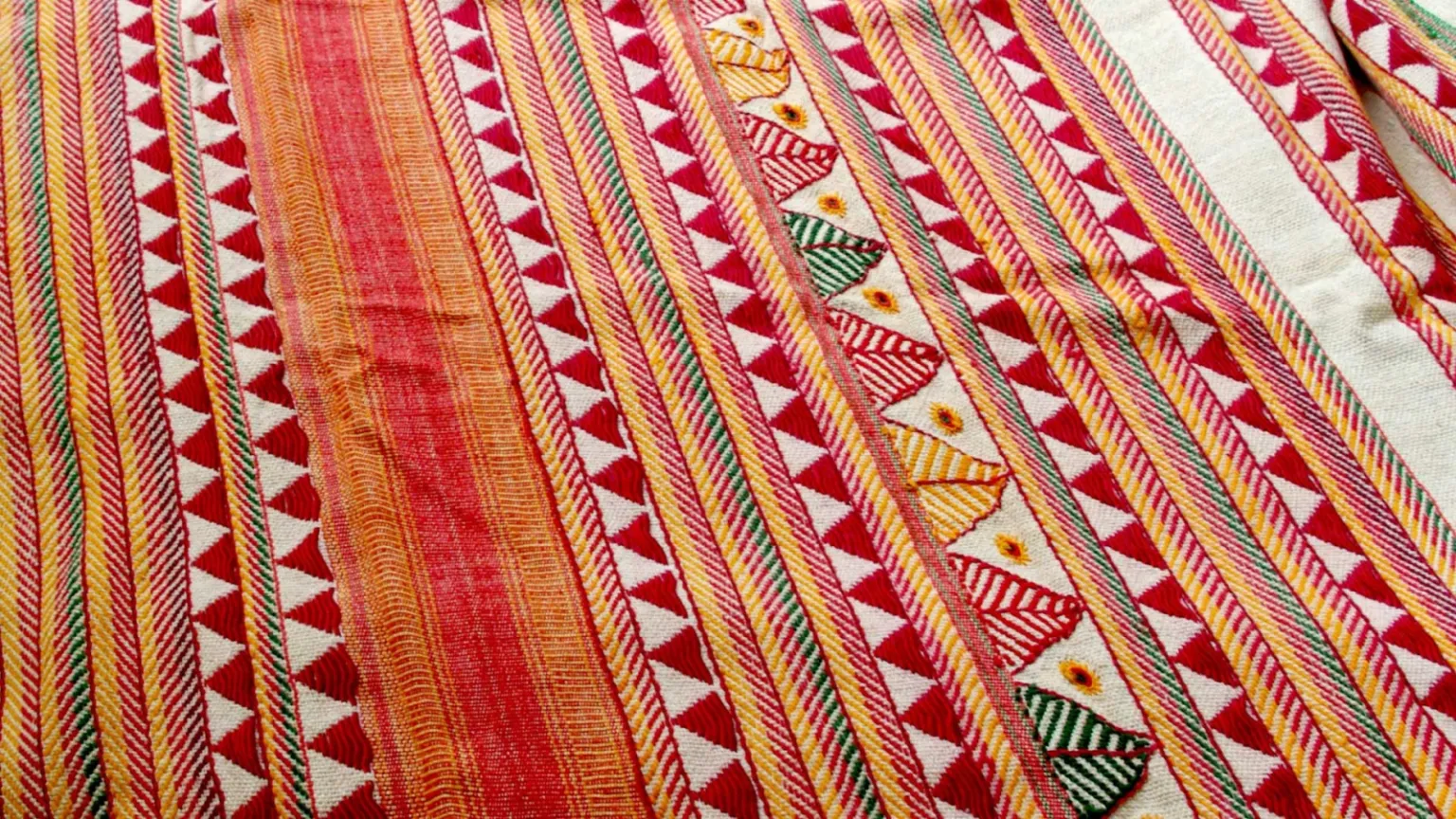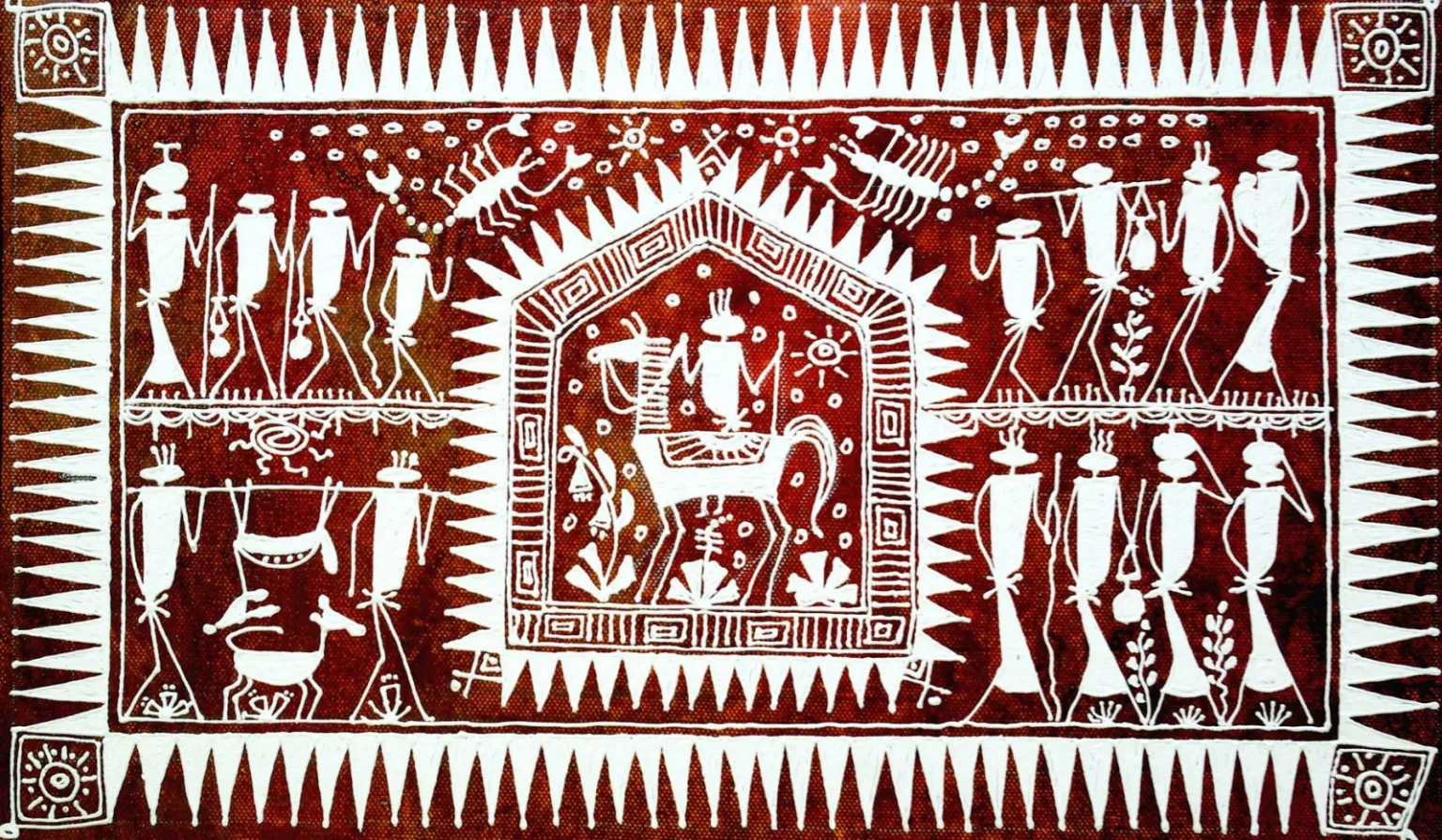Important Facts For Prelims
GI Tags for Over 17 Products
- 10 Jan 2024
- 6 min read
Why in News?
Recently, over 17 products from Odisha, Arunachal Pradesh, West Bengal, and J&K have received the Geographical Indication (GI) tag.
What Products have Received the GI Tags from Odisha?
- Kapdaganda Shawl:

- Woven and embroidered by the women of the Dongria Kondh tribe, a Particularly Vulnerable Tribal Group (PVTG) in the Niyamgiri hills in Odisha’s Rayagada and Kalahandi districts, the shawl reflects the rich tribal heritage of the Dongria Kondhs.
- Lanjia Saura Painting:

- The art form belongs to the Lanjia Saura community, a PVTG largely residing in the Rayagada district.
- These paintings are in the form of exterior murals painted on the mud walls of homes. White paintings figure over a crimson-maroon background.
- Koraput Kala Jeera Rice:
- The black-coloured rice variety, also known as the ‘Prince of Rice’, is famous for its aroma, taste, texture and nutritional value.
- Tribal farmers of the Koraput region have preserved the rice variety for around 1,000 years.
- Similipal Kai Chutney:
- The chutney made with red weaver ants is a traditional delicacy of the tribals in Odisha’s Mayurbhanj district. These ants are found in the forests of Mayurbhanj, including in the Similipal forests.
- Nayagarh Kanteimundi Brinjal:
- This Brinjal is known for its prickly thorns on the stems and the whole plant. The plants are resistant to major insects and can be grown with minimal pesticide.
- Odisha Khajuri Guda:
- Odisha’s “Khajuri Guda” or jaggery is a natural sweetener extracted from date palm trees and has its origin in the Gajapati district.
- Dhenkanal Magji:
- It is a type of sweet made from cheese from buffalo milk, with distinct characteristics in terms of appearance, taste, flavour, shape, and size.
What are the other Products Which Received GI Tag?
| State | Product Name | Brief Explanation |
| Arunachal Pradesh | Wancho Wooden Craft | Ethnic wood craft integral to Wancho tribes, used for decoration and gifting, historically used in various aspects of their community life. |
| Adi Kekir | Ginger variety from Arunachal Pradesh. | |
| West Bengal | Tangail Saree | Saree style originating from Bengal with distinct weaving patterns. |
| Garad Saree | Saree, known for its unique texture and appearance, is a traditional attire from Bengal. | |
| Korial Saree | Saree variety is recognized for its weaving style and traditional significance in Bengal. | |
| Kalo Nunia Rice | Rice variety from West Bengal. | |
| Sundarban Honey | Honey sourced from the Sundarbans area of West Bengal. | |
| Gujarat | Kachchhi Kharek | Product of date palm harvested at Khalal (fresh stage), which are bold, crisp and sweet. |
| Jammu Kashmir | Ramban Anardana | Ramban Anardana, locally referred to as Dhruni, is an important fruit tree growing wild in hilly tracts and forests of J&K. |
What is a Geographical Indication (GI) tag Tag?
- About:
- A GI tag is a name or sign used on certain products that correspond to a specific geographical location or origin.
- The GI tag ensures that only the authorised users or those residing in the geographical territory are allowed to use the popular product name.
- It also protects the product from being copied or imitated by others.
- A registered GI is valid for 10 years.
- GI registration is overseen by the Department for Promotion of Industry and Internal Trade under the Ministry of Commerce and Industry.
- Legal Framework and Obligations:
- The Geographical Indications of Goods (Registration and Protection) Act, 1999 seeks to provide for the registration and better protection of geographical indications relating to goods in India.
- It is governed and directed by the WTO Agreement on Trade-Related Aspects of Intellectual Property Rights (TRIPS).
- Furthermore, the significance of protecting industrial property and geographical indications as integral components of intellectual property is acknowledged and emphasised in Articles 1(2) and 10 of the Paris Convention.
UPSC Civil Services Examination, Previous Year Questions (PYQs)
Q1. Which of the following has/have been accorded ‘Geographical Indication’ status? (2015)
- Banaras Brocades and Sarees
- Rajasthani Daal-Bati-Churma
- Tirupathi Laddu
Select the correct answer using the code given below:
(a) 1 only
(b) 2 and 3 only
(c) 1 and 3 only
(d) 1, 2 and 3
Ans: (c)
Q2. India enacted the Geographical Indications of Goods (Registration and Protection) Act, 1999 in order to comply with the obligations to (2018)
(a) ILO
(b) IMF
(c) UNCTAD
(d) WTO
Ans: (d)




